How my moldy scanner exposed an exciting (and troubling) future of Biodigital Convergence
When Biological and Digital Worlds Clash
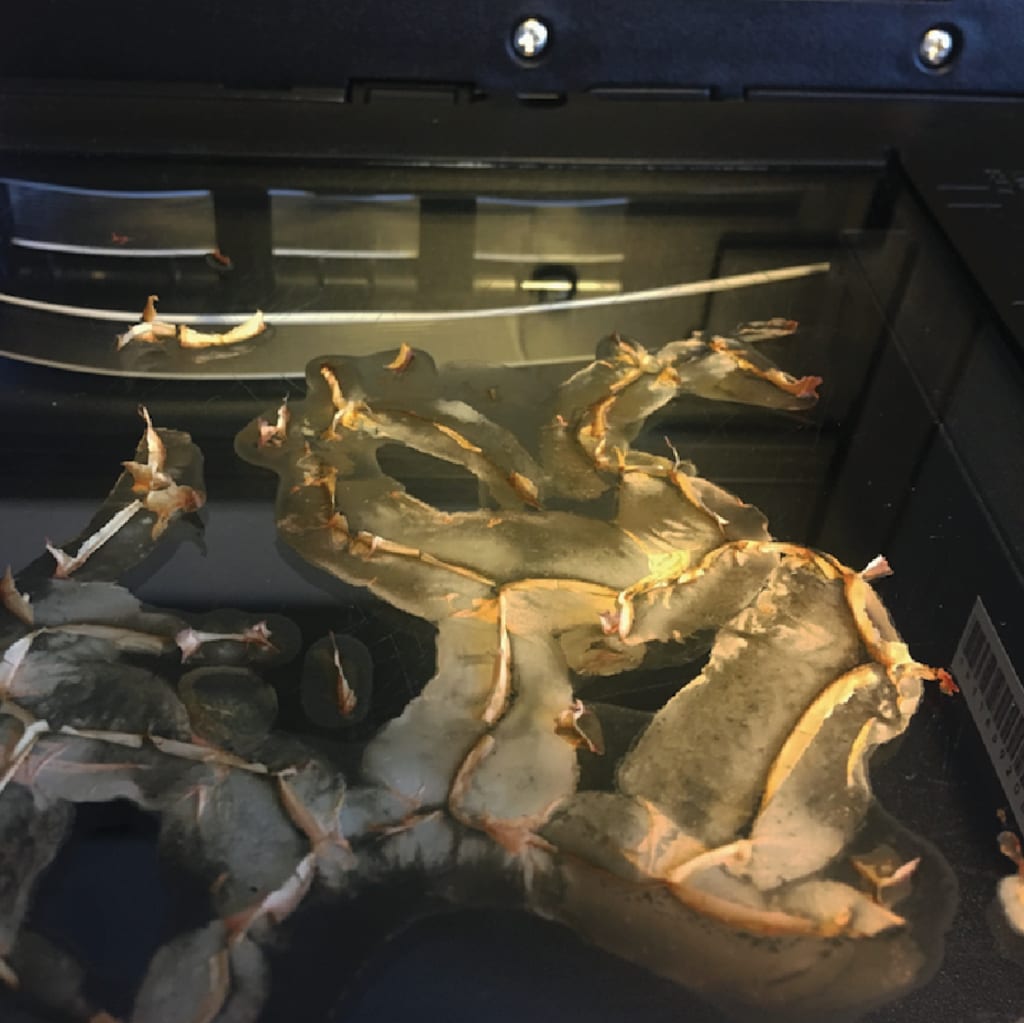
One afternoon, a few years back, an uneasy aroma of musty cheese wafted from an unlikely source in my office — the flatbed scanner. Upon investigation, I discovered a thick, crusty, and moldy residue smeared across its transparent scanning bed, accompanied by an unmistakable odor. But I wasn’t that astonished by this revelation, as it turned out to be a peculiar side-effect resulting from a research project I had conducted a few days earlier.
Mould Rush, the Game
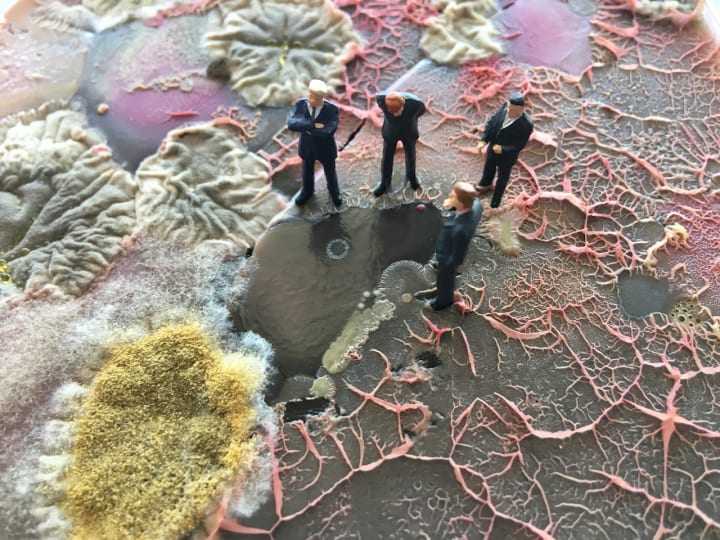
Let me set the scene by diving into the backstory of what just happened and how that funky incident came about. It all started with my research project, a little game I had designed called Mould Rush. Picture this: I set up a live stream on my Twitch channel, displaying real-time mold growth on a petri dish. The game kicks off with an empty dish slowly getting covered by mold until it blankets the whole surface. Using a flatbed scanner, the game snaps scans of the mold-filled dish at intervals, streaming these live images to the audience almost instantly.
To create these growth images, I started by introducing mold onto an agar gel-filled petri dish. Then, I delicately placed the dish on the scanner bed with a tiny 3-millimeter gap and captured scans every two minutes over several days for the live stream (see image below).
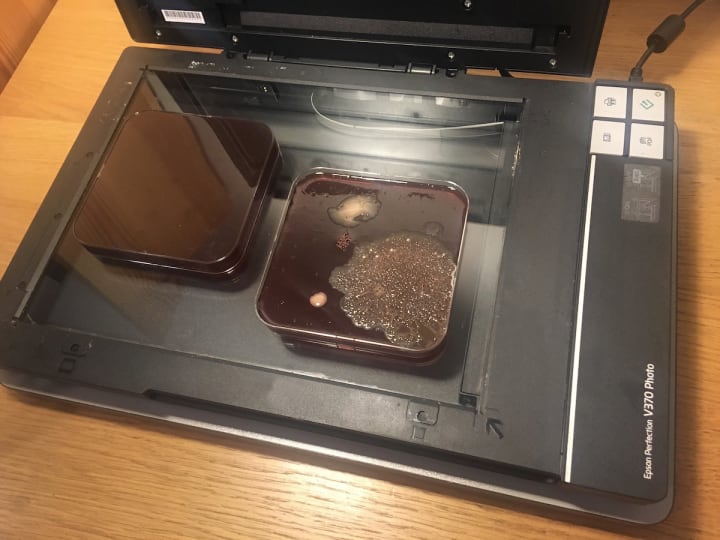
Now, here’s the fun part. Viewers get in on the action, placing bets on which part of the divided dish the hidden mold cluster would occupy.
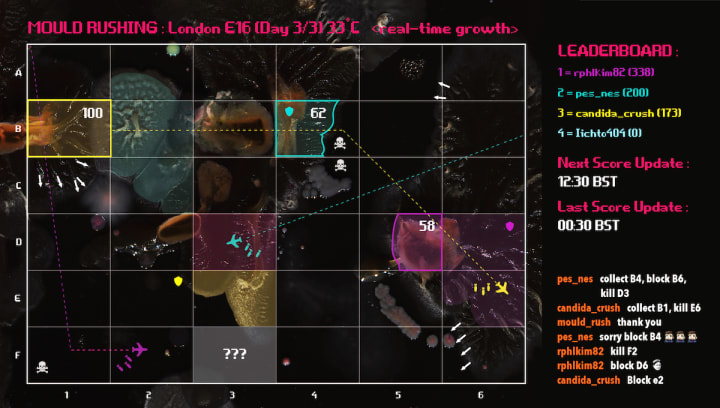
They could also give commands, like triggering a ‘kill function’ on an opponent’s segment. That’s when I, the moderator, step in, crack open the scanner, and unleash an antifungal solution on the chosen segment to wipe out the growth. Points are dished out based on an image processing tool that detects the color of the fungal growth, converting it into scores. The more your chosen segment flourishes, the more points you pocket. But beware, lose your segment to an opponent’s attack, and points take a nosedive.
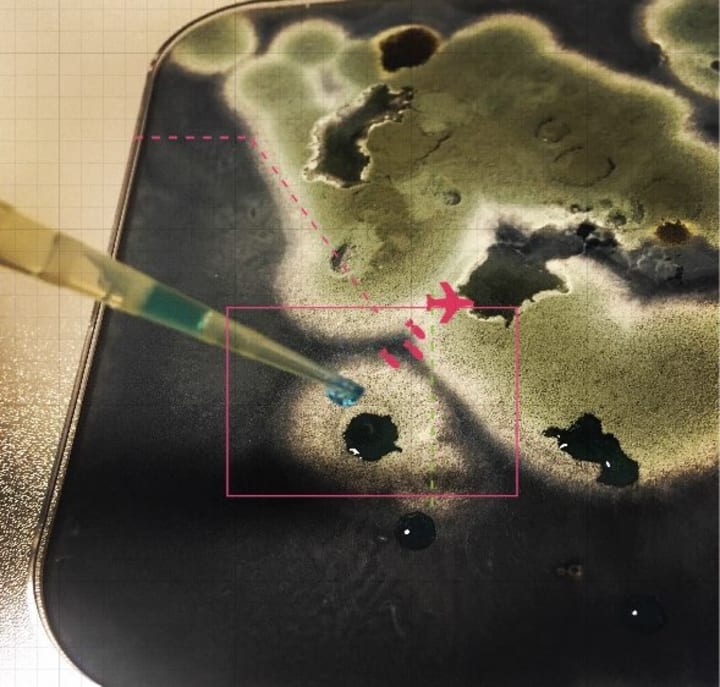
Mold Generated Glitch
Out of the blue, during one of our Mould Rush gaming sessions, things took an unexpected turn. The scanner, working overtime with its continuous scanning schedule over five days straight, started overheating. Now, while this overheating didn’t mess with the machine’s performance, it sure gave the mold culture inside a boost. The heat caused the mold to sprawl beyond its dish, reaching out to touch the scanner’s surface, leaving behind a dried, dead patch of residue. Imagine boiling pasta water overflowing and staining the stovetop. Not exactly a pretty sight.
This little “glitch” messed up the game dynamics. See, the dried-out patch couldn’t grow anymore, disrupting the flow of the gameplay. It ended up as a somewhat frozen-looking patch of cells on the live-streaming screen. Given the cells were no longer a part of the culture dish, it was difficult for the players to verify whether the corresponding grid on the dish grew over time or killed during bombing raids. Essentially, this glitch birthed what we dubbed the ‘Mouldy Ghost’ — a seemingly lifeless yet immortal character in the game that neither grew nor disappeared.
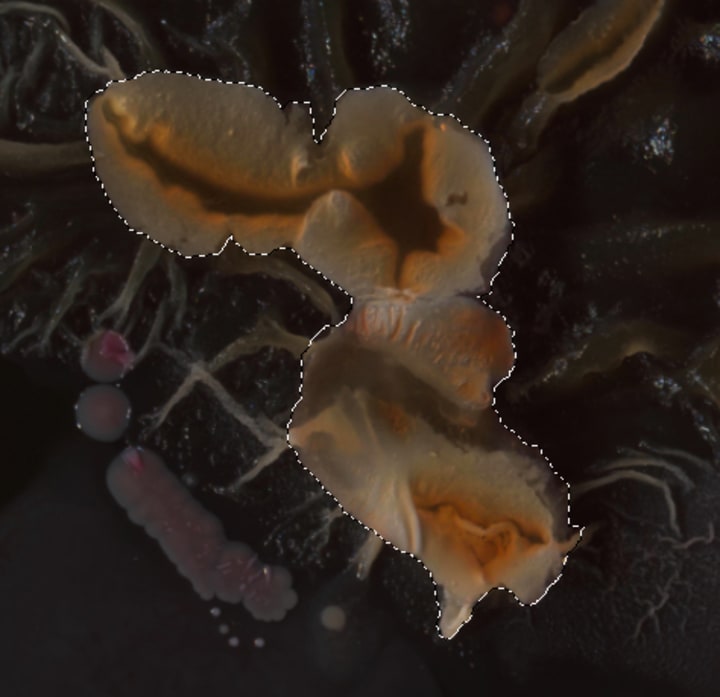
Now, you might wonder, why on earth would this glitch be intriguing (and slightly scary) for the future of biodigital convergence, a term that refers to the merging of biology and digital technology to create new tech and applications involving biological processes. As explained below, this unexpected hiccup hints at unforeseen possibilities in blending the biological and digital worlds that could lead to exciting yet troubling discoveries and developments.
Biodigital Convergence
Let’s start by considering how this game embodies biodigital convergence. The design of Mould Rush might seem modest, but I feel that it is an adequate example illustrating the concept. In this game, biological elements in the form of mold interact with digital platforms through the scanner and accompanying image-processing algorithms. Without this coming together of biology and computer software, the game simply wouldn’t work. In other words, the biological processes — like growth and gene expressions — effectively churn out dynamic content for the game, while the non-living components sense, translate, and display the biological processes through digital means.
Novelty and Unpredictability of Biotic Gaming
As a blend of biology and digital technology, games like Mould Rush bring a fresh and unique twist to the gaming scene. Remember how I mentioned earlier that Mould Rush integrates actual living microorganisms into the computer game? Well, this kind of use of live microbes as characters hasn’t really been fully explored in video games yet. What’s more, in Mould Rush, these microbes aren’t just sitting around — they’re thriving and their growth patterns are directly shaping the game. The very essence of video game mechanics is driven by biological processes. The different shapes, textures, and the speed at which these microorganisms grow can affect how both the computer and human players behave in the game. The image processing program running during gameplay has to adapt its algorithm to reflect these biologically generated visual changes. Meanwhile, human players also need to adjust their strategies based on these changes.
What’s intriguing is that the growth behaviors of these microorganisms, despite coming from the same colony of cells, when they are inoculated onto multiple Petri dishes, can be wildly unpredictable even in carefully controlled lab settings. No two plates of microbes and no two games will produce the same visualizations of the living terrain. Microbes can create a wide array of shapes, textures, colors (and smells). Some might even undergo random mutations or get contaminated by other species that take over. This unpredictability in microbial growth translates directly into unpredictable changes in the game terrain, which adds to the thrill and excitement of the player experience.
These Can Be Fun, But…
While the attributes of biodigital convergence can present an element of intrigue, there exist two notable caveats that merit attention. Allow me to elaborate further on these aspects, underscoring their relevance for prospective designers aiming to develop biotic games like Mould Rush.
Primarily, addressing potential glitches in biodigital systems is a notably intricate task. In computer games, glitches are typically resolved by identifying and modifying the game’s underlying code. While debugging may pose its challenges, it is fundamentally a one-dimensional process — altering a singular type of variable, namely, the code. However, when dealing with instances akin to Mould Rush, rectification isn’t always straightforward. The crux of the issue occasionally lies in the biological nature of the organisms involved. These biological anomalies may be imperceptible to human observation, such as mutations or resistance to certain elements, or their manifestations may occur at a pace that surpasses human comprehension. Unlike computer game glitches that generate identical outcomes with each recurrence due to identical routines, biotic glitches also possess significant variability. They exhibit a high degree of plasticity, resulting in disparate effects on gameplay for each unique glitch. For instance, the Mouldy Ghost phenomenon in one instance differs substantially from another due to the distinct pattern resulting from each microbial growth.
Secondly, there exists a concern regarding physical risk. Glitches in conventional/traditional computer games may occasionally feature flashing images, which although potentially harmful to individuals with epilepsy, pose a comparatively lower risk to the general populace. Contrastingly, biotic glitches present a heightened physical risk. These anomalies have the potential to expose players to pathogens or toxins introduced as a consequence of the glitch. Therefore, there is a genuine apprehension about potential health hazards arising from unexpected glitches in biotic games, necessitating careful consideration of player well-being in such scenarios.
In Conclusion…
Through delving into the curious biodigital glitch in Mould Rush, I aimed to shed light on the fascinating yet slightly unsettling prospects lying ahead in the realm of biodigital convergence. Here, we’re talking about the merging of biological systems — think microbes — and digital systems. While this fusion offers an exciting avenue, it also brings about some potential concerns.
The thing is, biological systems are quite an unpredictable bunch. Their involvement in biodigital games, like Mould Rush, can amp up player experiences in unexpected ways. However, there’s a flip side to this coin. The complexity of potential bugs or glitches in these hybrid biodigital systems is something that needs careful consideration. Moreover, safety is a critical factor that cannot be overlooked.
Did the story catch your interest? You might want to dive deeper into the overview and a general introduction to biotic gaming here.
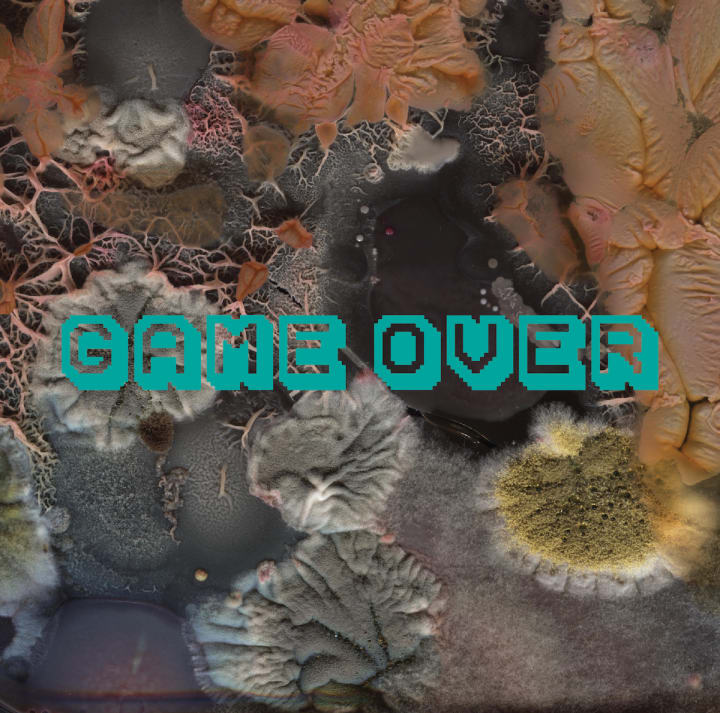
(NB: I confirm that I own the rights to the contents, unless otherwise stated).
About the Creator
Raphael Kim
Independent researcher, writer, and educator: On topics around microbes, DNA, and AI. Ph.D in hybrid bio-digital gaming with living microbes
Enjoyed the story? Support the Creator.
Subscribe for free to receive all their stories in your feed. You could also pledge your support or give them a one-off tip, letting them know you appreciate their work.






Comments
There are no comments for this story
Be the first to respond and start the conversation.